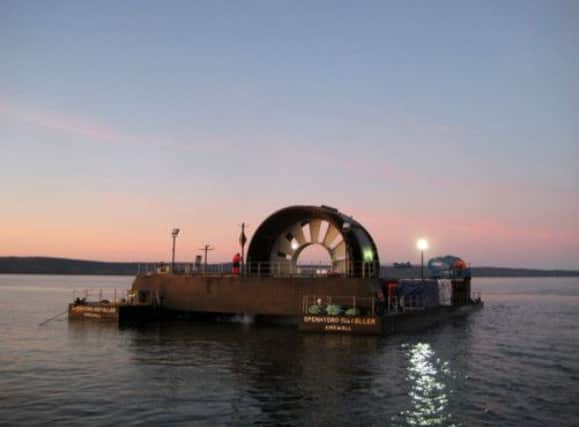We need a plan for big-ticket projects


THE man behind the successful delivery of the London Olympics has outlined his vision on how the UK could replicate that achievement when identifying, funding and progressing major infrastructure projects.
The Armitt Review, chaired by former Network Rail chief Sir John Armitt, recommends setting up a National Infrastructure Commission (NIC) to evaluate the UK’s needs 25-30 years out. This independent body would also assess Britain’s needs every ten years and the government of the day would be compelled to draw up comprehensive plans within a year on how the schemes would be financed and delivered.
Advertisement
Hide AdAdvertisement
Hide AdArmitt’s Commission would give politicians little room for manoeuvre and prevent the ducking and diving which often takes place when difficult and sometimes unpopular decisions have to be made on the huge – and expensive – projects necessary to shape a future Britain.
As things stand, in Scotland we don’t have an external, properly independent policy-setter responsible for devising a long-term infrastructure roadmap – and the lack of a clear pipeline of projects post-referendum highlights why such a body would be helpful.
The success that Scotland has had in the years since 2009 – adopting innovative funding strategies to ensure spades continue to go into the ground across the country – has sheltered the construction industry from some of the harshest impacts of recession and provided wider economic benefits. However, that achievement could be jeopardised without a new vision for the future.
The National Planning Framework provides some comfort in this area. It looks forward over a similar 20-30 year timeframe and has singled out more than a dozen potential developments of national significance (from carbon capture and storage at Grangemouth and Peterhead, to Pentland Firth energy infrastructure investment) However, the NPF is a product of government and so is naturally always going to be driven by the prevailing government’s policy at any given time.
Where Armitt’s recommendations seem to be striking a chord for many in the infrastructure sector is in the potential they provide for a medium to longer term stability and predictability of pipeline. Infrastructure spending is always controversial and with long lead-in times for procurement decisions, massive complexity and significant public sector resource and set-up costs, these projects tend to suffer disproportionately from the effects of political dithering.
Draft budget
Last month’s Scottish Government draft budget, with £8 billion earmarked for investment in Scotland’s infrastructure over the next two years, is a good news story, although a significant proportion of that sum relates to capital expenditure already committed.
However, this is an industry which has suffered more than most sectors of the economy since the dog days of 2008 and it remains difficult for the industry to form a clear view over the medium to longer term of where infrastructure priorities lie.
The attraction of an independently developed (but democratically endorsed) strategic development plan for nationally significant infrastructure lies in the degree of stability it could offer.
Advertisement
Hide AdAdvertisement
Hide AdIt is reassuring that the industry is currently busy going after a healthy programme of live opportunities in Scotland but there needs to be more clarity about what lies ahead if it is to be able to plan, resource and ramp up to be ready for the next wave of programmes. Similarly, while budgets remain constrained, Scotland needs to be able to maximise all opportunities for generating investment, public and private, into its nationally significant infrastructure developments.
Whether an independent Scotland would adopt the principals laid out by the Armitt Commission remains to be seen. However, if England and Wales were to take one idea from Scotland, it would be to ally a clearer vision for the country’s infrastructure with a more effective means of implementing it.
The Scottish Futures Trust
The Scottish Futures Trust is effectively a value-driving vehicle which, rather than having a role in strategic policy-setting or even programme establishment, looks at ways to ensure taxpayers’ money is spent as efficiently as possible.
The SFT does look at degrees of aggregation and collaboration within the programmes that fall under its remit, but has no mandate for the sort of high-level strategic recommendations that might come from the NIC.
Irrespective of the outcome of the referendum, it seems inarguable that Scotland would benefit from having a more robust, independent and non-government aligned body to hold politicians to account over how they identify strategic infrastructure needs and prioritise and deliver multi-million pound projects in a continuous and clearly signposted fashion. Similarly, no country can afford to overlook ways to ensure that infrastructure projects are procured as efficiently as possible. In this instance at least, perhaps a “best of both” approach should be adopted.
• Stuart Barr is a Glasgow-based partner at Pinsent Masons www.pinsentmasons.com